
Solar power systems company SolarEdge (NASDAQ: SEDG) announced better-than-expected revenue in Q2 CY2025, with sales up 9.1% year on year to $289.4 million. On top of that, next quarter’s revenue guidance ($335 million at the midpoint) was surprisingly good and 10.2% above what analysts were expecting. Its non-GAAP loss of $0.81 per share was 3.5% above analysts’ consensus estimates.
Is now the time to buy SolarEdge? Find out by accessing our full research report, it’s free.
SolarEdge (SEDG) Q2 CY2025 Highlights:
- Revenue: $289.4 million vs analyst estimates of $274.9 million (9.1% year-on-year growth, 5.3% beat)
- Adjusted EPS: -$0.81 vs analyst estimates of -$0.84 (3.5% beat)
- Adjusted EBITDA: -$107.3 million vs analyst estimates of -$52.71 million (-37.1% margin, significant miss)
- Revenue Guidance for Q3 CY2025 is $335 million at the midpoint, above analyst estimates of $304 million
- Operating Margin: -39.9%, up from -60.4% in the same quarter last year
- Free Cash Flow was -$9.06 million compared to -$66.96 million in the same quarter last year
- Megawatts Shipped: 1,194, up 321 year on year
- Market Capitalization: $1.52 billion
“I'm proud of the steady progress we made in turning SolarEdge around this quarter," said Shuki Nir, CEO of SolarEdge.
Company Overview
Established in 2006, SolarEdge (NASDAQ: SEDG) creates advanced systems to improve the efficiency of solar panels.
Revenue Growth
A company’s long-term sales performance is one signal of its overall quality. Even a bad business can shine for one or two quarters, but a top-tier one grows for years. SolarEdge struggled to consistently generate demand over the last five years as its sales dropped at a 10% annual rate. This wasn’t a great result and suggests it’s a low quality business.
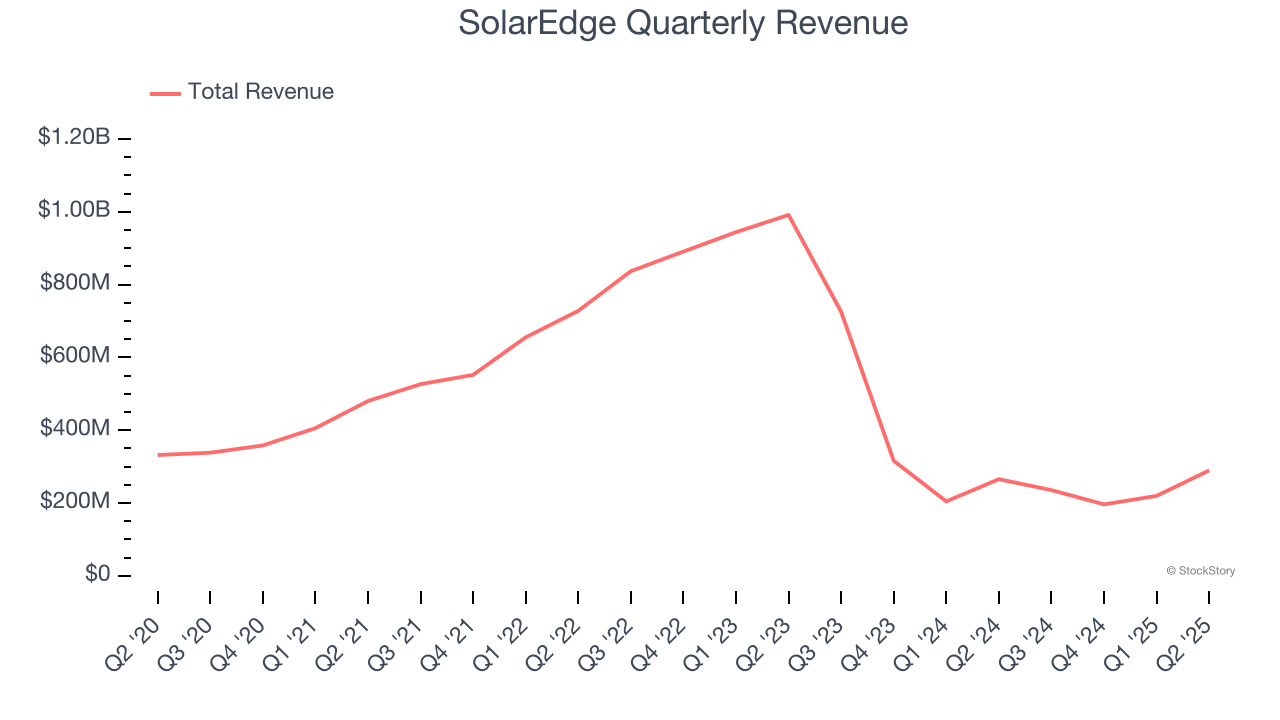
We at StockStory place the most emphasis on long-term growth, but within industrials, a half-decade historical view may miss cycles, industry trends, or a company capitalizing on catalysts such as a new contract win or a successful product line. SolarEdge’s recent performance shows its demand remained suppressed as its revenue has declined by 49.3% annually over the last two years. SolarEdge isn’t alone in its struggles as the Renewable Energy industry experienced a cyclical downturn, with many similar businesses observing lower sales at this time. 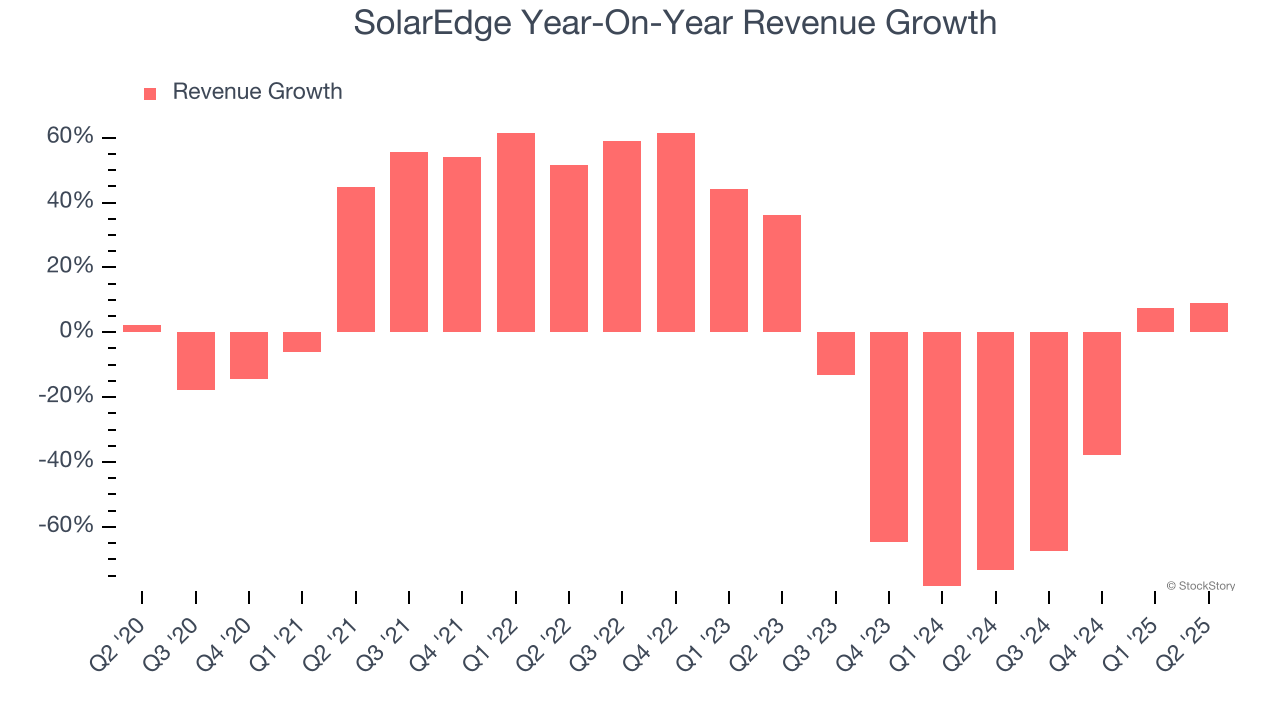
SolarEdge also discloses its number of megawatts shipped, which reached 1,194 in the latest quarter. Over the last two years, SolarEdge’s megawatts shipped averaged 24.8% year-on-year declines. Because this number is higher than its revenue growth during the same period, we can see the company’s monetization has fallen. 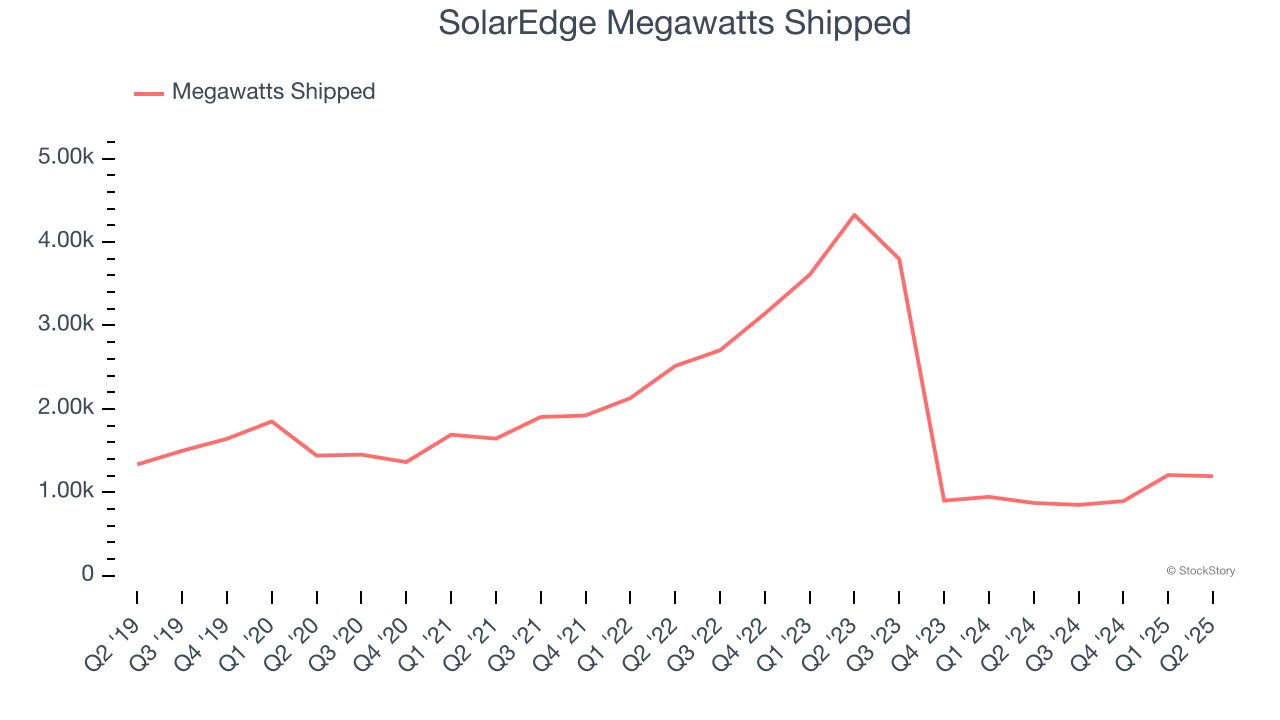
This quarter, SolarEdge reported year-on-year revenue growth of 9.1%, and its $289.4 million of revenue exceeded Wall Street’s estimates by 5.3%. Company management is currently guiding for a 42.3% year-on-year increase in sales next quarter.
Looking further ahead, sell-side analysts expect revenue to grow 32.3% over the next 12 months, an improvement versus the last two years. This projection is eye-popping and suggests its newer products and services will spur better top-line performance.
Software is eating the world and there is virtually no industry left that has been untouched by it. That drives increasing demand for tools helping software developers do their jobs, whether it be monitoring critical cloud infrastructure, integrating audio and video functionality, or ensuring smooth content streaming. Click here to access a free report on our 3 favorite stocks to play this generational megatrend.
Operating Margin
Operating margin is a key measure of profitability. Think of it as net income - the bottom line - excluding the impact of taxes and interest on debt, which are less connected to business fundamentals.
SolarEdge’s high expenses have contributed to an average operating margin of negative 14.5% over the last five years. Unprofitable industrials companies require extra attention because they could get caught swimming naked when the tide goes out. It’s hard to trust that the business can endure a full cycle.
Analyzing the trend in its profitability, SolarEdge’s operating margin decreased significantly over the last five years. SolarEdge’s performance was poor no matter how you look at it - it shows that costs were rising and it couldn’t pass them onto its customers.
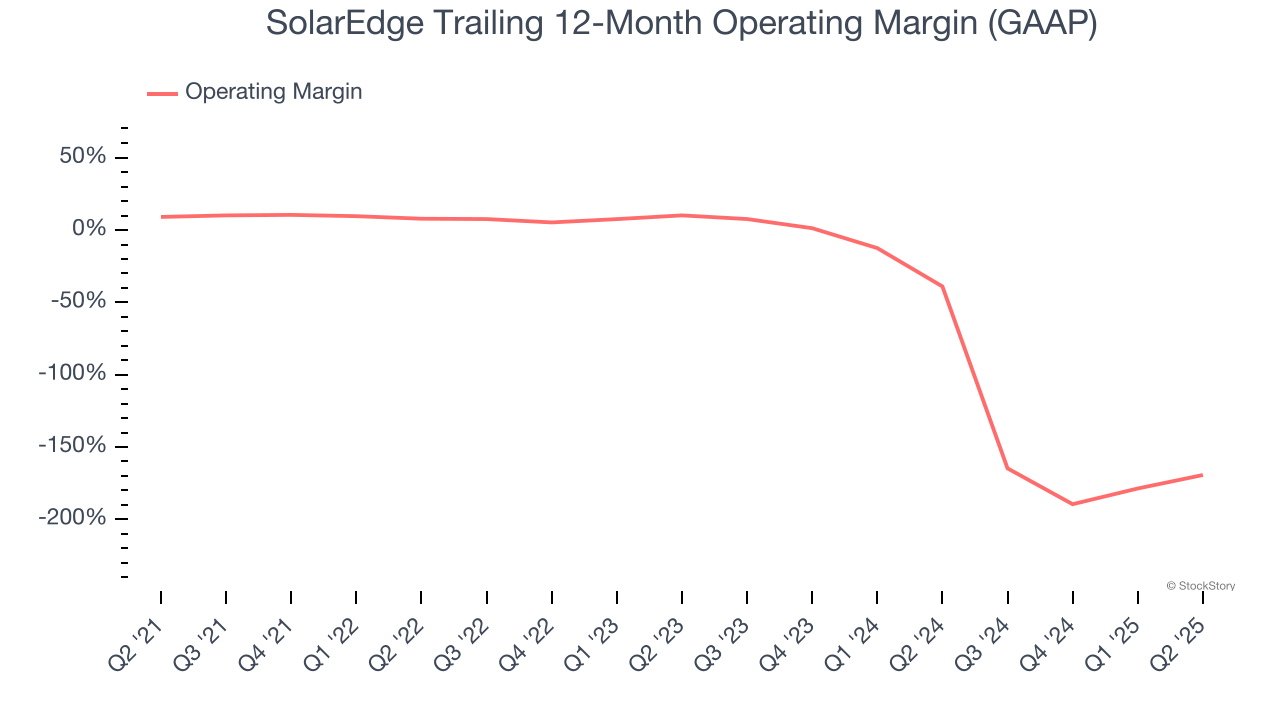
In Q2, SolarEdge generated a negative 39.9% operating margin. The company's consistent lack of profits raise a flag.
Earnings Per Share
We track the long-term change in earnings per share (EPS) for the same reason as long-term revenue growth. Compared to revenue, however, EPS highlights whether a company’s growth is profitable.
Sadly for SolarEdge, its EPS declined by 45.1% annually over the last five years, more than its revenue. This tells us the company struggled because its fixed cost base made it difficult to adjust to shrinking demand.
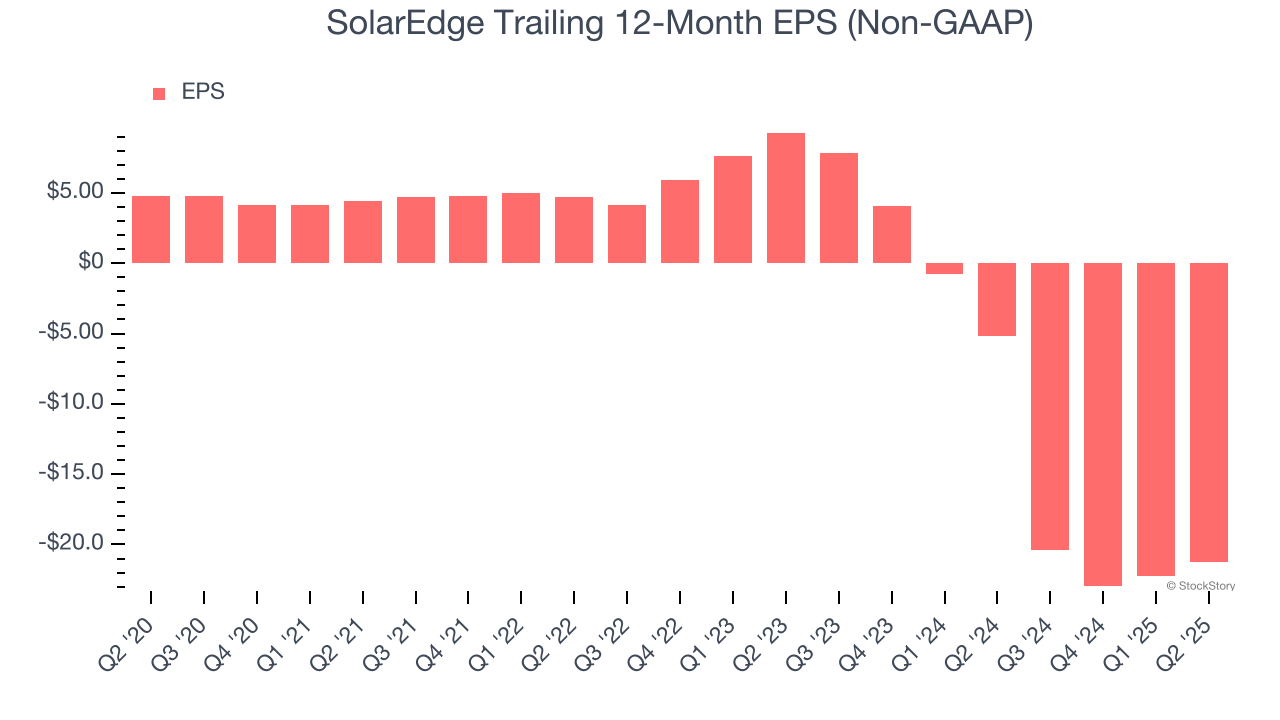
Diving into the nuances of SolarEdge’s earnings can give us a better understanding of its performance. As we mentioned earlier, SolarEdge’s operating margin expanded this quarter but declined by 178.5 percentage points over the last five years. Its share count also grew by 11.5%, meaning the company not only became less efficient with its operating expenses but also diluted its shareholders. 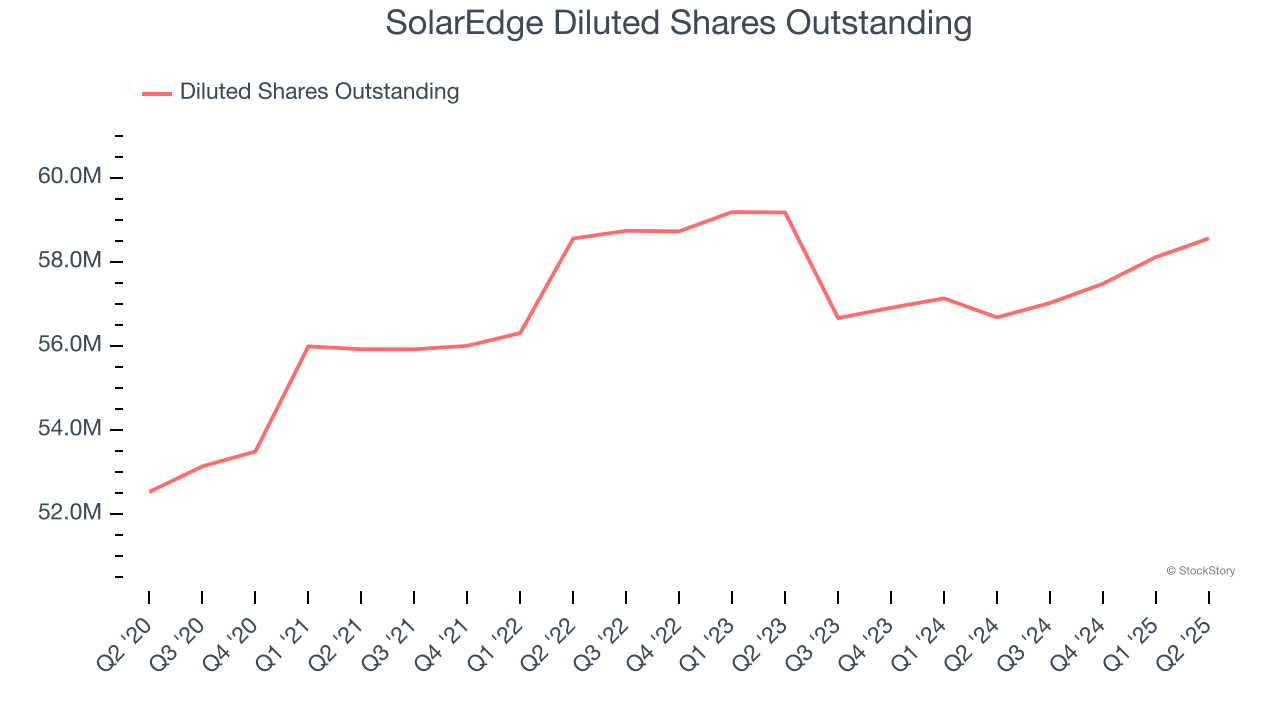
Like with revenue, we analyze EPS over a shorter period to see if we are missing a change in the business.
For SolarEdge, its two-year annual EPS declines of 107% show it’s continued to underperform. These results were bad no matter how you slice the data.
In Q2, SolarEdge reported adjusted EPS at negative $0.81, up from negative $1.79 in the same quarter last year. This print beat analysts’ estimates by 3.5%. Over the next 12 months, Wall Street expects SolarEdge to improve its earnings losses. Analysts forecast its full-year EPS of negative $21.25 will advance to negative $1.49.
Key Takeaways from SolarEdge’s Q2 Results
We were impressed by how significantly SolarEdge blew past analysts’ revenue expectations this quarter. We were also glad its revenue guidance for next quarter trumped Wall Street’s estimates. On the other hand, its EBITDA missed. Overall, this print had some key positives. Investors were likely hoping for more, and shares traded down 5.2% to $24.47 immediately after reporting.
So do we think SolarEdge is an attractive buy at the current price? We think that the latest quarter is only one piece of the longer-term business quality puzzle. Quality, when combined with valuation, can help determine if the stock is a buy. We cover that in our actionable full research report which you can read here, it’s free.



